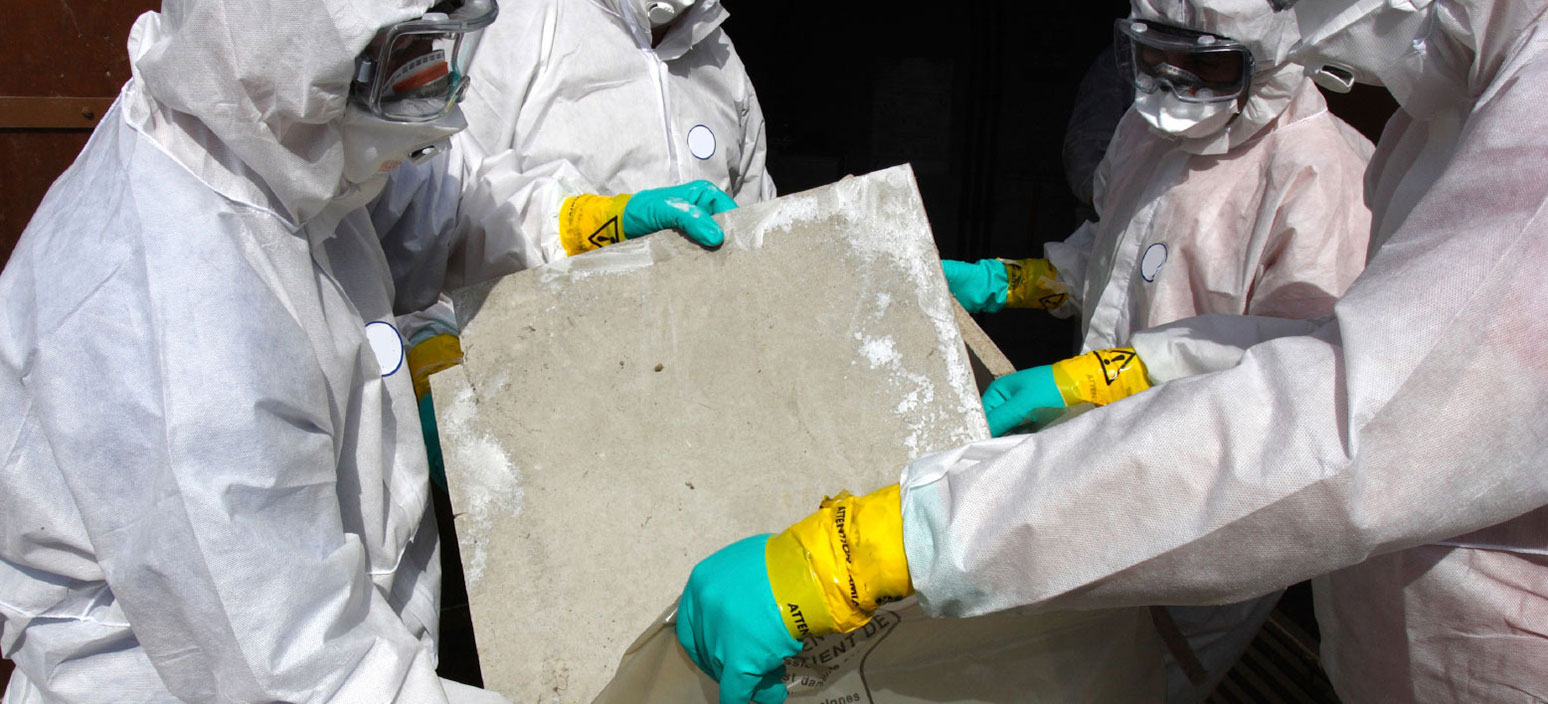One Stop Environmental regularly helps homeowners, property managers, construction companies and insurance agencies with residential asbestos removal. Finding asbestos in your home can be scary and confusing as you navigate how to make your property safe again. Having removed asbestos from hundreds of homes in Alabama, we thought we would share some advice and information that can help if you think asbestos is present in yours.
What is asbestos?
According to OSHA asbestos is the name given to a group of naturally occurring minerals that are resistant to heat and corrosion. Asbestos is well recognized as a health hazard and its use is now highly regulated by both OSHA and EPA. Asbestos fibers associated with these health risks are too small to be seen with the naked eye. Breathing asbestos fibers can cause a buildup of scar-like tissue in the lungs called asbestosis and result in loss of lung function that often progresses to disability and death. Asbestos also causes cancer of the lung and other diseases such as mesothelioma of the pleura which is a fatal malignant tumor of the membrane lining the cavity of the lung or stomach.
In laymen’s terms, breathing in asbestos fibers is very dangerous. It was used in a lot of homes before the dangers were fully recognized. Now asbestos containing materials are heavily regulated and rarely seen in new homes, but many beautiful, older properties need to be abated. The good news is that a qualified environmental consultant can perform a survey of your home to ensure you are aware of the potential asbestos hazard present. If it is, we can safely remove it so it is not a threat to your family. If you have started a renovation and discover asbestos, stop work and call a professional immediately.
Where is asbestos usually found in homes?
We typically see asbestos throughout older homes. We see it in roofing and siding materials- some shingles are made of asbestos cement. It can be found in insulation of homes built between 1930 and 1950. Those vinyl floor tiles you can’t wait to replace and their backing might contain asbestos. We also regularly see asbestos tape on hot water and steam pipes in older homes. Here are some other places asbestos might be in your home:
- Deck undersheeting
- Cement asbestos board siding and undersheeting
- Roof felt and shingles
- Window putty
- Vermiculite attic insulation
- Vermiculite wall insulation
- Vinyl asbestos sheets, tiles and undersheeting
- Pipe lagging
- Sprayed-on acoustical ceilings
- Acoustic tiles
- Textured paint
- Insulation on knob and tube wiring
- Main panel and fuse boxes
What is the process for getting rid of asbestos in my home?
Step 1: TESTING
Have a professional test for asbestos. This is very important because it is impossible to recognize asbestos containing material by visual inspection alone. If you are buying or renovating a home built prior to the 1970’s, chances are asbestos is present. A Polarized Light Microscopy test using a small sample of the material will determine whether or not asbestos is present.
Step 2: SITE ASSESSMENT
Just because asbestos is present, doesn’t necessarily mean it poses a danger to you or your family. If the asbestos containing material is in good condition and unlikely to be damaged you may not be in danger of exposure. After you have determined asbestos is present, you can call us for a free site assessment. We come to your house and evaluate how much asbestos is present, where it is located, its condition and the threat level.
During the assessment we will work with you on a plan for making sure your home is safe. We let you know if the material needs to be removed, needs to be encapsulated or can be left as is. Our number one priority is safety, our second is cost. We will determine the safest, most cost effective solution and can provide you a firm fixed price for our team to complete the work.
STEP 3: REMOVAL
When we arrive at your property for asbestos removal, here is what you can expect. We will seal off the room or rooms completely including doorways, windows, ducts and other conduits with plastic sheeting. We then use air scrubbers with HEPA filtration to create a negative pressure within the room. The negative air pressure prevents air from escaping into the rest of the house. Our team will have on their own personal protective equipment including respirators and disposable Tyvek suits. They look crazy, but this will keep them safe during the project. We remove and encapsulate the asbestos containing material and safely load it to be hauled away for hazardous material disposal. Lastly, we perform a final cleaning of the room.
STEP 4: MORE TESTING
Some projects will require an air test once work is complete. Like initial testing, this should be performed by a company that did not perform the removal to prevent a conflict of interest. Once the home is deemed clear, it is safe to reenter.
How much does asbestos removal cost?
Until we have performed a site assessment we cannot give you an exact price, but the most common range we see is $1,000-$5,000. Price is determined based on how much material needs to be abated and where it is located. The price we give you before beginning work will not go up as it is a firm fixed price.
Our abatement team is here to help. Call us at 205-595-8188 for information on your specific projects or to schedule site assessment.




